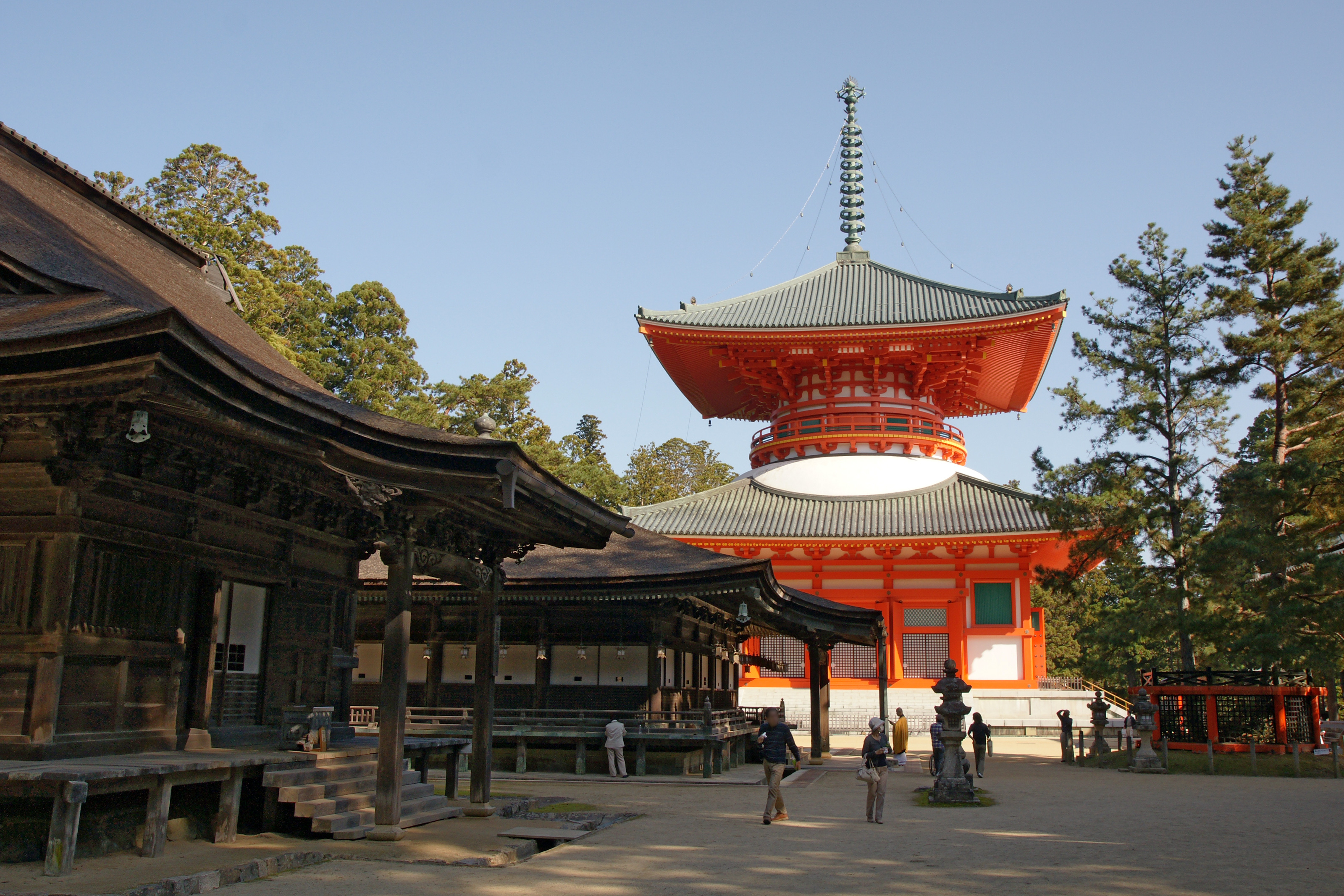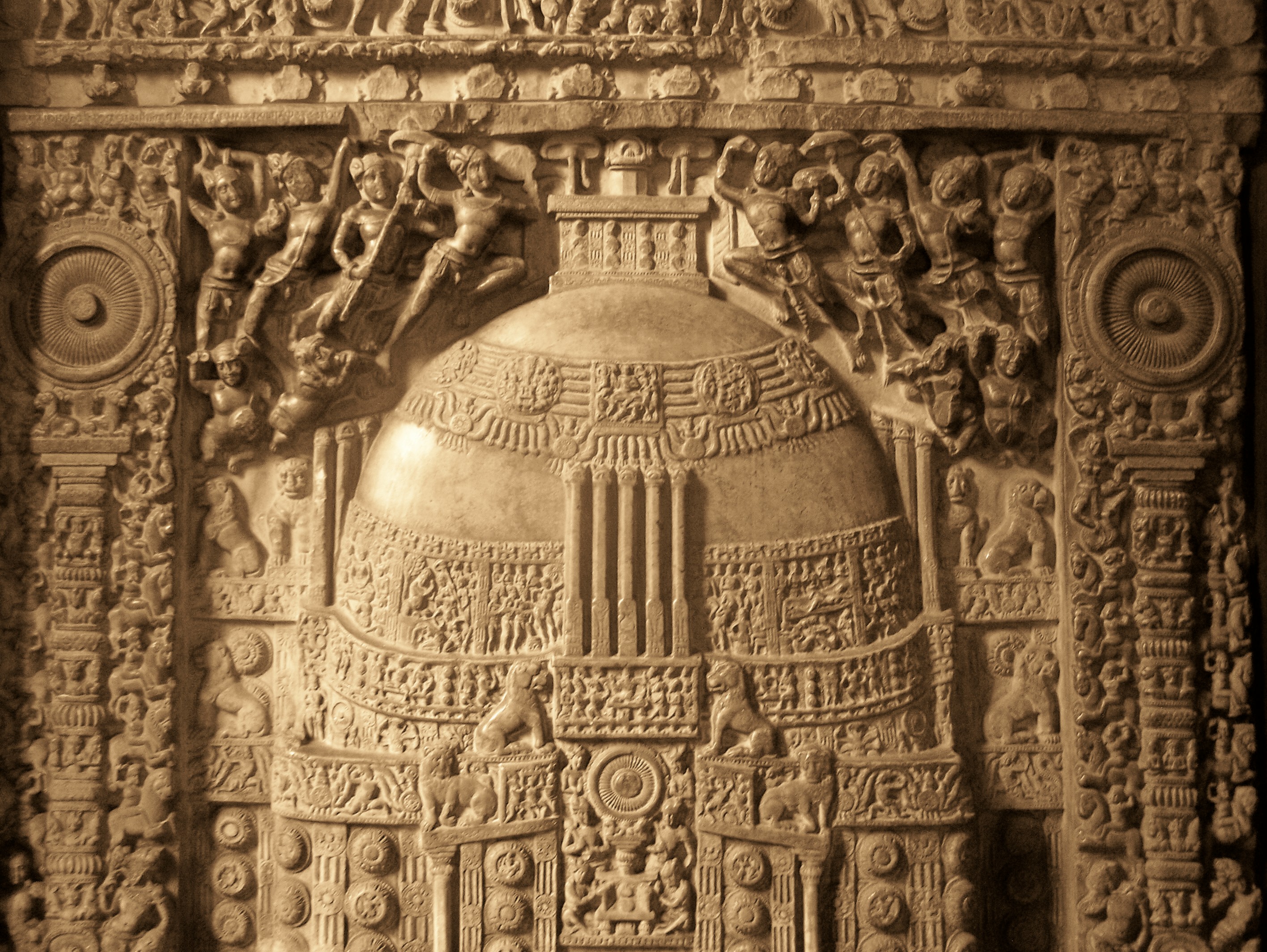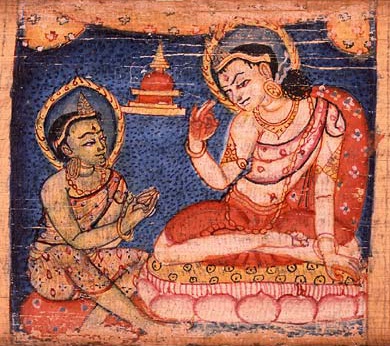|
Hongaku
The moon reflected in water is a popular simile for enlightenment used by DŇćgen in the '' East Asian Buddhist doctrine often translated as "inherent", "innate", "intrinsic" or "original" enlightenment in Buddhism">awakeness. This doctrine holds all sentient beings are already enlightened or awakened in some way. In this view, since all beings have some kind of awakeness as their true nature, the attainment of insight is a process of discovering and recognizing what is already present, not of attaining some goal or developing a potential.Stone, Jacqueline. 'From Buddha Nature to Original Enlightenment: "Contemplating Suchness" in Medieval Japan' in Mathes, Klaus-Dieter, and Casey Kemp, eds. ''Buddha Nature Across Asia''. Wiener Studien zur Tibetologie und Buddhismuskunde 103. Vienna: Arbeitkreis f√ľr tibetische und buddhistische Studien, University of Vienna, 2022. As such, people do not have to become Buddhas through religious cultivation, they just have to recognize that they ... [...More Info...] [...Related Items...] OR: [Wikipedia] [Google] [Baidu] |
Tendai
, also known as the Tendai Dharma Flower School (Ś§©ŚŹįś≥ēŤŹĮŚģó, ''Tendai hokke shŇę,'' sometimes just ''HokkeshŇę''), is a MahńĀyńĀna Buddhist tradition with significant esoteric elements that was officially established in Japan in 806 by the Japanese monk SaichŇć. The Tendai school, which has been based on Mount Hiei since its inception, rose to prominence during the Heian period (794‚Äď1185). It gradually eclipsed the powerful HossŇć school and competed with the rival Shingon school to become the most influential sect at the Imperial court. By the Kamakura period (1185‚Äď1333), Tendai had become one of the dominant forms of Japanese Buddhism, with numerous temples and vast landholdings. During the Kamakura period, various monks left Tendai to found new Buddhist schools such as JŇćdo-shŇę, JŇćdo ShinshŇę, Nichiren-shŇę and SŇćtŇć Zen. The destruction of the head temple of Enryaku-ji by Oda Nobunaga in 1571, as well as the geographic shift of the capital away from ... [...More Info...] [...Related Items...] OR: [Wikipedia] [Google] [Baidu] |
Guifeng Zongmi
Guifeng Zongmi () (780‚Äď1 February 841) was a Tang dynasty Chinese Buddhist monk and scholar who is considered a patriarch of both the Huayan school and Chan Buddhism. Zongmi wrote a number of works on several Mahayana Sutras, Chan and Huayan, and he also discussed Taoism and Confucianism. His works are a major source for studying the various Chan schools of the Tang. Zongmi was deeply interested in both the practical and doctrinal aspects of Mahayana Buddhism, especially the teachings of the '' Sutra of Perfect Enlightenment'' and the '' Mahayana Awakening of Faith''. Zongmi's work is concerned with harmonizing the various Chan teachings (especially the doctrines of sudden awakening and original enlightenment) with other Chinese Buddhist traditions, especially Huayan, though he also drew on the work of Tiantai Zhiyi in his ritual works. His philosophy attempts to create a comprehensive worldview that includes and sublimates all Buddhist and non-buddhist teachings of his t ... [...More Info...] [...Related Items...] OR: [Wikipedia] [Google] [Baidu] |
Buddha-nature
In Buddhist philosophy and soteriology, Buddha-nature ( Chinese: , Japanese: , , Sanskrit: ) is the innate potential for all sentient beings to become a Buddha or the fact that all sentient beings already have a pure Buddha-essence within themselves.Heng-Ching ShihThe Significance Of 'Tathagatagarbha' ‚Äď A Positive Expression Of 'Sunyata'/ref> "Buddha-nature" is the common English translation for several related MahńĀyńĀna Buddhism, Buddhist terms, most notably ''tathńĀgatagarbha'' and ''buddhadhńĀtu'', but also ''sugatagarbha,'' and ''buddhagarbha''. ''TathńĀgatagarbha'' can mean "the womb" or "embryo" (''garbha'') of the "thus-gone one" (''Tathagata, tathńĀgata''), and can also mean "containing a ''tathńĀgata''"''. BuddhadhńĀtu'' can mean "buddha-element", "buddha-realm", or "buddha-substrate". Buddha-nature has a wide range of (sometimes conflicting) meanings in Indian Buddhism and later in East Asian Buddhism, East Asian and Tibetan Buddhism, Tibetan Buddhist literatur ... [...More Info...] [...Related Items...] OR: [Wikipedia] [Google] [Baidu] |
Shingon Buddhism
is one of the major schools of Buddhism in Japan and one of the few surviving Vajrayana lineages in East Asian Buddhism. It is a form of Japanese Esoteric Buddhism and is sometimes called "TŇćmitsu" (śĚĪŚĮÜ lit. "Esoteric uddhismof TŇć-ji"). The word ''shingon'' is the Japanese reading of the Chinese word ('), which is the translation of the Sanskrit word mantra. The Zhńďny√°n lineage was founded in China (c. 7th‚Äď8th centuries) by Indian vajrńĀcńĀryas (esoteric masters) like ŇöubhakarasiŠĻÉha, Vajrabodhi and Amoghavajra. These esoteric teachings would later flourish in Japan under the auspices of a Buddhist monk named KŇękai (, 774‚Äď835), who traveled to Tang China and received these esoteric transmissions from a Chinese master named Huiguo (746‚Äď805). KŇękai established his tradition at Mount KŇćya (in Wakayama Prefecture), which remains the central pilgrimage center of Shingon Buddhism. The practice of the Shingon school stresses that one is able to atta ... [...More Info...] [...Related Items...] OR: [Wikipedia] [Google] [Baidu] |
Awakening Of Faith In The Mahayana
''Awakening of Faith in the MahńĀyńĀna'' (AF, , reconstructed Sanskrit title: ''*MahńĀyńĀna-ŇõraddhotpńĀda-ŇõńĀstra'') is an influential Mahayana Buddhist treatise for East Asian Buddhism. Though traditionally attributed to the 2nd century CE Indian master AŇõvaghoŠĻ£a, no Sanskrit version is extant and it is widely regarded by many contemporary scholars as having been composed in China.Gardner, Alex"On the ''Awakening of Faith in the MahńĀyńĀna''."''Buddha-Nature: A Tsadra Foundation Initiative'', October 9, 2019. The main theories of the authorship of the ''Awakening of Faith'' among contemporary scholars now point to either the 6th century Indian monk translators ParamńĀrtha and Bodhiruci, or alternatively to one of their Chinese students. Origin and authorship While the text is traditionally attributed to AŇõvaghoŠĻ£a, no Sanskrit version of the text is extant. The two earliest existing versions are written in Chinese, and contemporary scholars widely accept the theory t ... [...More Info...] [...Related Items...] OR: [Wikipedia] [Google] [Baidu] |
Sääksjärvi Jyväskylä
S√§√§ksj√§rvi () is a lake in Kokem√§ki, Satakunta, western Finland, east from the town of Pori. The lake is notable because it overlies an impact crater. The crater is in diameter and is completely buried under the lake and is not visible at the surface. The age of the impact structure is estimated to be about 543 ¬Ī 12 Ma (million years ago), at the boundary between the Ediacaran and Cambrian periods. There are impactite rocks in the southwestern region from the crater confirming its extraterrestrial origin. At the time of its discovery, only one impact crater (Lappaj√§rvi Lappaj√§rvi is a municipalities of Finland, municipality in Finland's Southern Ostrobothnia region. It is located from Sein√§joki, from Kokkola and from Vaasa. The municipality has a population of () and covers an area of of which , or near ...) was known in Finland. See also * Impact craters in Finland References External links * S√§√§ksj√§rvi impact structure Impact craters of Finland Pro ... [...More Info...] [...Related Items...] OR: [Wikipedia] [Google] [Baidu] |
ŇörńęmńĀlńĀdevńę SiŠĻÉhanńĀda SŇętra
The ''ŇörńęmńĀlńĀdevńę SiŠĻÉhanńĀda SŇętra'' (, '' of Queen ŇörńęmńĀlńĀ'') is one of the main early MahńĀyńĀna Buddhist texts belonging to the TathńĀgatagarbha sŇętras that teaches the doctrines of Buddha-nature and "One Vehicle" through the words of the Indian queen ŇörńęmńĀlńĀ. After its composition, this text became the primary scriptural advocate in India for the universal potentiality of Buddhahood. History Brian Edward Brown, a specialist in Buddha-nature doctrines, writes that the composition of the ''ŇörńęmńĀlńĀdevńę SiŠĻÉhanńĀda SŇętra'' occurred during the ń™kŠĻ£vńĀku Dynasty in the 3rd century CE as a product of the Caitika schools of the MahńĀsńĀŠĻÉghikas. Alex Wayman has outlined eleven points of complete agreement between the MahńĀsńĀŠĻÉghikas and the ''ŇörńęmńĀlńĀ'', along with four major arguments for this association. Anthony Barber also associates the earlier development of the '' TathńĀgatagarbha SŇętra'' with the MahńĀsńĀŠĻÉghikas, and concludes that the M ... [...More Info...] [...Related Items...] OR: [Wikipedia] [Google] [Baidu] |
TathńĀgatagarbha SŇętras
The TathńĀgatagarbha sŇętras are a group of Mahayana sutras that present the concept of the "womb" or "embryo" (''garbha'') of the tathńĀgata, the buddha. Every sentient being has the possibility to attain Buddhahood because of the '' tathńĀgatagarbha''. This concept originated in India but was a major influence in the development of East Asian Buddhism, where it was equated with the concept of ''BuddhadhńĀtu'', "buddha-element" or "buddha-nature". The TathńĀgatagarbha sŇętras include the '' TathńĀgatagarbha SŇętra'', '' ŇörńęmńĀlńĀdevńę SiŠĻÉhanńĀda SŇętra'', '' MahńĀyńĀna MahńĀparinirvńĀŠĻáa SŇętra'' and the '' AŠĻÖgulimńĀlńęya SŇętra''. Related ideas are in found in the '' LaŠĻÖkńĀvatńĀra SŇętra'' and '' AvataŠĻÉsaka SŇętra''. Another major text, the '' Awakening of Faith'', was originally composed in China, while the ''MahńĀyńĀna MahńĀparinirvńĀŠĻáa SŇętra'' was considerably extended in China . Comparing the tradition of TathńĀgatagarbha sŇętras to the Yogachara and Mad ... [...More Info...] [...Related Items...] OR: [Wikipedia] [Google] [Baidu] |
MahńĀyńĀna MahńĀparinirvńĀŠĻáa SŇętra
The ''MahńĀyńĀna MahńĀparinirvńĀŠĻáa SŇętra'' (Sanskrit; , ; Vietnamese: ''Kinh ńźŠļ°i B√°t NiŠļŅt B√†n'') or ''Nirvana Sutra'' for short, is an influential Mahayana, MahńĀyńĀna Buddhist Sutra, scripture of the Buddha-nature class. The original title of the sutra was ''MahńĀparinirvńĀŠĻáamahńĀsŇętra'' (''Great Scripture of the Great Perfect NirvńĀŠĻáa'') and the earliest version of the text was associated with the MahńĀsńĀŠĻÉghika-LokottaravńĀda school.Baums, StefanReview of Habata, ''Die zentralasiatischen Sanskrit‚ÄźFragmente des MahńĀparinirvńĀŠĻáa‚ÄźmahńĀsŇętra''. Indo‚ÄźIranian Journal 58: 71‚Äď78./ref> The sutra was particularly important for the development of East Asian Buddhism. The ''Nirvana sutra'' uses the backdrop of the Buddha's Parinirvana, final nirvana to discuss the nature of the The Buddha, Buddha, who is described in this sutra as undying and eternal, without beginning or end. The text also discusses the associated doctrine of buddha-nature (Buddha-nature, tat ... [...More Info...] [...Related Items...] OR: [Wikipedia] [Google] [Baidu] |
BuddhńĀvataŠĻÉsaka SŇętra
The ''BuddhńĀvataŠĻÉsaka-nńĀma-mahńĀ¬≠vaipulya-sŇętra (The Mahayana, MahńĀvaipulya SŇętra named "BuddhńĀvataŠĻÉsaka")'' is one of the most influential Mahayana sutras, MahńĀyńĀna sutras of East Asian Buddhism.Hamar, Imre. BuddhńĀvataŠĻÉsakasŇętra, 2015, in ''Brill's Encyclopedia of Buddhism'' (Volume One), Handbook of Oriental Studies. Section 2 South Asia, Volume: 29-1. Editor-in-Chief: Jonathan Silk. It is often referred to in short as the '. In Classical Sanskrit, ''avataŠĻÉsa'', ''vataŠĻÉsa'' and ''uttaŠĻÉsa'' (from stem ''taŠĻÉs'', meaning "to decorate") all mean garland, wreath, or any circular ornament, such as an earring''''; suffix -ka often functions either as a diminutive or plural. Thus, the title may be rendered in English as ''A Garland of Buddhas'', ''Buddha Ornaments'', or ''Buddha's Fine Garland''. In Buddhist Hybrid Sanskrit, the term ''avataŠĻÉsaka'' means "a great number," "a multitude," or "a collection." This is matched by the Tibetan title of the sutra, wh ... [...More Info...] [...Related Items...] OR: [Wikipedia] [Google] [Baidu] |
RatnagotravibhńĀga
The ''RatnagotravibhńĀga'' (Sanskrit, abbreviated as RGV, meaning: ''Analysis of the Jeweled Lineage, Investigating the Jewel Disposition'') and its ''vyńĀkhyńĀ'' commentary (abbreviated RGVV to refer to the RGV verses along with the embedded commentary), is an influential MahńĀyńĀna Buddhist treatise on buddha-nature (a.k.a. tathńĀgatagarbha). The text is also known as the ''MahńĀyńĀnottaratantraŇõńĀstra (The Ultimate Teaching of the MahńĀyńĀna).''Gardner, Alex. "On the ''RatnagotravibhńĀga''." ''Buddha-Nature: A Tsadra Foundation Initiative'', September 12, 2018. https://buddhanature.tsadra.org/index.php/Articles/On_the_Ratnagotravibh%C4%81ga . The RGVV was originally composed in Sanskrit, likely between the middle of the third century and no later than 433 CE.Takasaki (1966), The text and its commentary are also preserved in Tibetan and Chinese translations''.'' The ''Ratnagotra'' focuses on the buddha nature present in all sentient beings, which is eternal, blissful, uncondit ... [...More Info...] [...Related Items...] OR: [Wikipedia] [Google] [Baidu] |
ŇöŇęraŠĻÖgama SŇętra
The ''ŇöŇęraŠĻÖgama SŇętra'' (, ''SŇętra of the Heroic'' ''March'') (Taisho no. 945) is a Mahayana Buddhist sutra that has been especially influential on Korean Buddhism (where it remains a major subject of study in SŇŹn monasteries) and Chinese Buddhism (where it remains a regular part of the daily liturgy in all Chinese Buddhist monasteries and a major subject of doctrinal study).Benn, James A. ''Another Look at the Pseudo-ŇöŇęraŠĻÉgama sŇętra.'' Harvard Journal of Asiatic Studies, Vol. 68, No. 1 (Jun., 2008), pp. 57-89, Harvard-Yenching Institute, It is important for Zen/Chan Buddhism and Chinese Pure land Buddhism (where it is considered a central scripture).Venerable Master Chin Kung; Li Ping Nan. ''The Awakening of Compassion and Wisdom,'' p. 199. The doctrinal outlook of the ''ŇöŇęraŠĻÖgama SŇętra'' is that of Buddha-nature, Yogacara thought, and esoteric Buddhism. The ''ŇöŇęraŠĻÖgama SŇętra'' was widely accepted as a sutra in East Asian Buddhism, where it has traditi ... [...More Info...] [...Related Items...] OR: [Wikipedia] [Google] [Baidu] |




